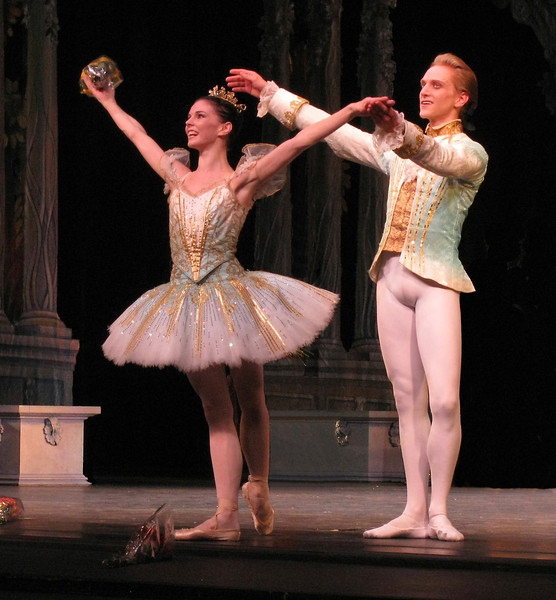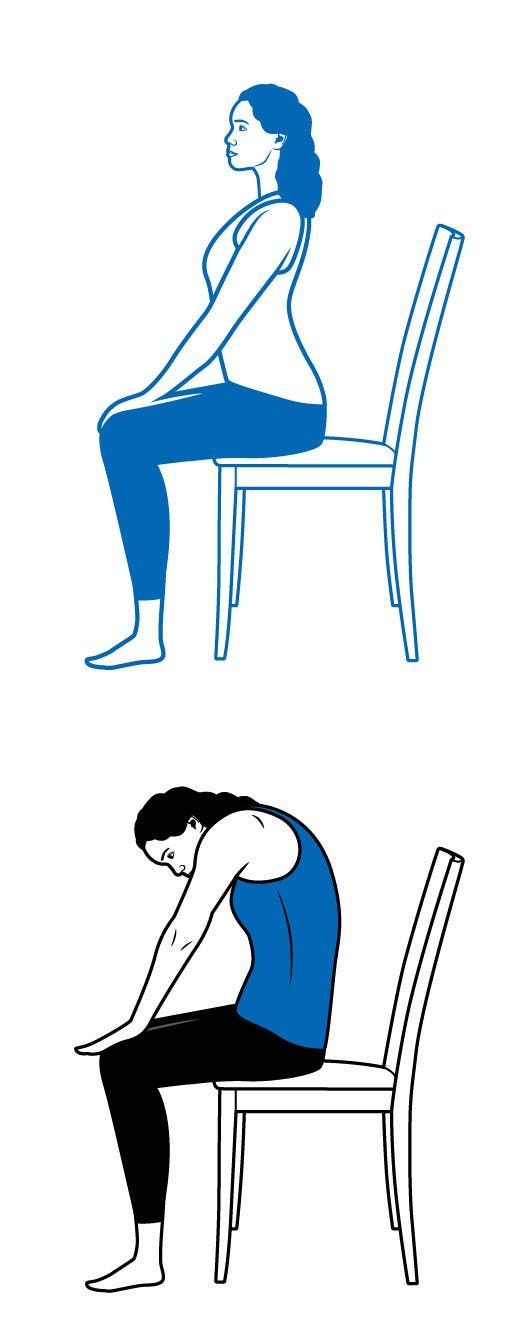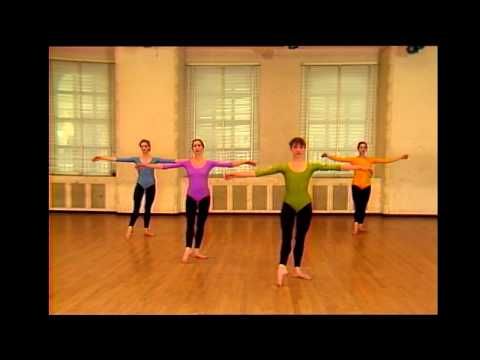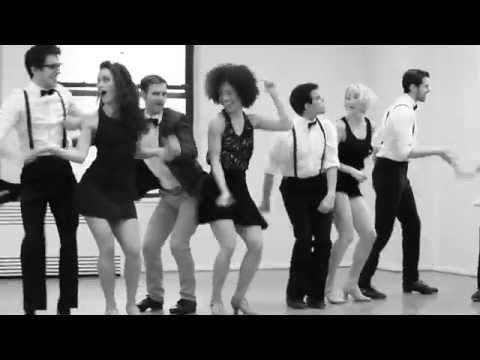How to improve posture in dance
How To Improve Posture in Dance: 5 Ways
May 9, 2015 Dance Teacher Tips Brandi Vickers
Nothing ruins the beautiful lines of a ballerina than slumping shoulders. However, studies have shown that up to 40 percent of kids have poor posture, whether as a result of heavy backpacks, too much TV time or just a general disposition toward slouching. As you teach your young dancers, it’s essential that you work with them to maintain proper posture. Not only will this help them to appear graceful and elegant, but it will also mitigate their risk of back injury. Here are five suggestions on how to improve posture in dance.
1. Use a Visual
Many dancers need to see concepts demonstrated to fully understand them, which is why instructors are always dancing along with their students. The same principle holds true with learning proper posture.
“Most dancers learn visually, so they’ll try to mimic proper body position, but often they don’t understand the roots of where it’s coming from,” Chelsie Hightower, a performer on “Dancing with The Stars,” explained to Dance Spirit.
For this reason, it’s often helpful to show your students pictures or videos of proper posture. You may want to consider showing them an old recital video where a few dancers had really good posture and others were slouching. Another option is to use a TV episode, like one from “DWTS” or “Dance Moms,” where the dancers worked on posture.
2. Stretch it Out
One way to effectively and safely realign trouble areas is stretching. Search the Internet for corrective stretches, or use these ones suggested by Best Health magazine:
- Chest and shoulder stretch: This activity is often helpful for dancers who slump forward. Have them lie on their backs with their arms stretched outward and elbows bent into a bench-press position.
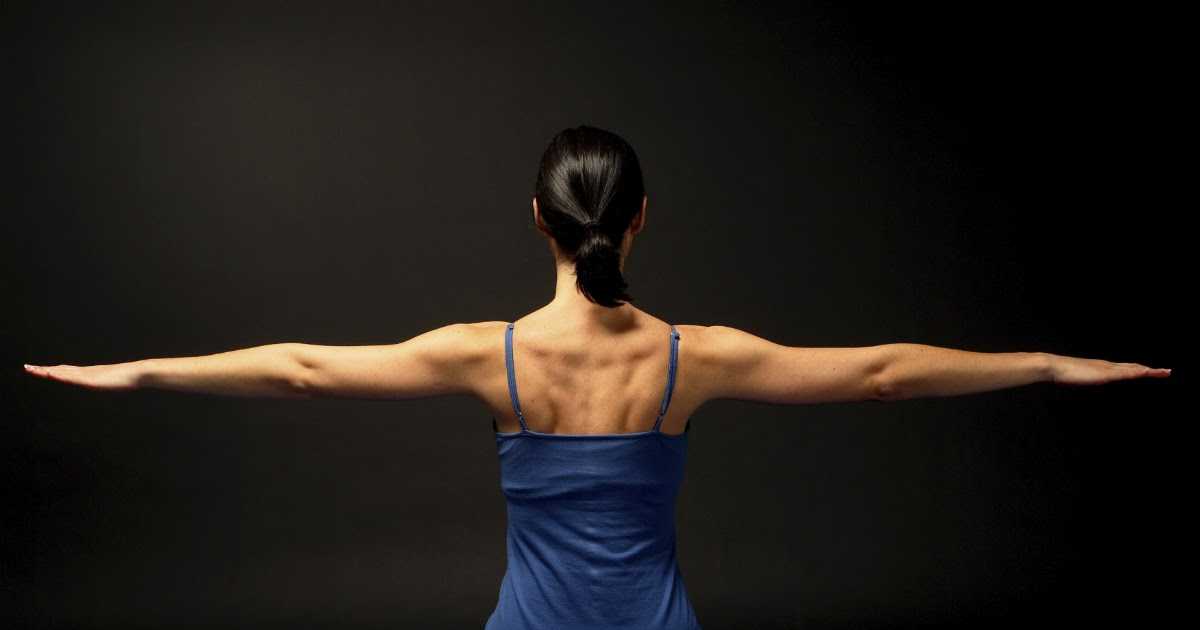 Instruct your dancers to squeeze their shoulder blades together without arching their backs. Hold the position for 10 seconds, and repeat 4 times.
Instruct your dancers to squeeze their shoulder blades together without arching their backs. Hold the position for 10 seconds, and repeat 4 times. - Butt bridge: Another area of the body that can get misaligned is the hips. To help dancers strengthen their mid-section, ask them to lie on their backs with their knees bent and feet on the floor. Have them squeeze their butts and push their hips toward the ceiling. Hold this position for 10 seconds, and repeat four times.
3. Try Core Exercises
Exercises that strengthen the abdominal muscles can also help to improve posture. You may want to work a few Pilates exercises into your classes. These can be as simple as a few sets of crunches, but they can go a long way toward straightening out dancers’ lines.
4. Help from Props
On a Dance.net forum, some dance teachers explained that they work on posture during class by using props. A small ball or bean bag can serve as a physical reminder for dancers to keep their arms straight or shoulders back. Get creative with your use of props for a fun lesson that will work wonders for your slouchers.
Get creative with your use of props for a fun lesson that will work wonders for your slouchers.
5. Practice Makes Perfect
Unfortunately, your dancers will continue to struggle with their posture if they forget about it the minute the leave the studio. Holding yourself upright is a full-time job, and they’ll need to be conscious of their posture throughout the day if they want to improve their dance skills. Brainstorm ways that your students can remind themselves to sit up straight in class, stop slouching in front of the TV and relax those shoulders during meals. Maybe they can set a reminder on their phones or enlist a friend to monitor their position throughout the day.
If your dancers follow these five easy steps, they’ll be on their way toward more elegant lines, straighter arms and over-all better technique.
tweet
5 Exercises to SERIOUSLY Improve your Posture & Dance Frame • Dance Insanity
Dance InsanityDance Conditioning
A student recently showed me a gadget that he’d bought to correct his bad posture.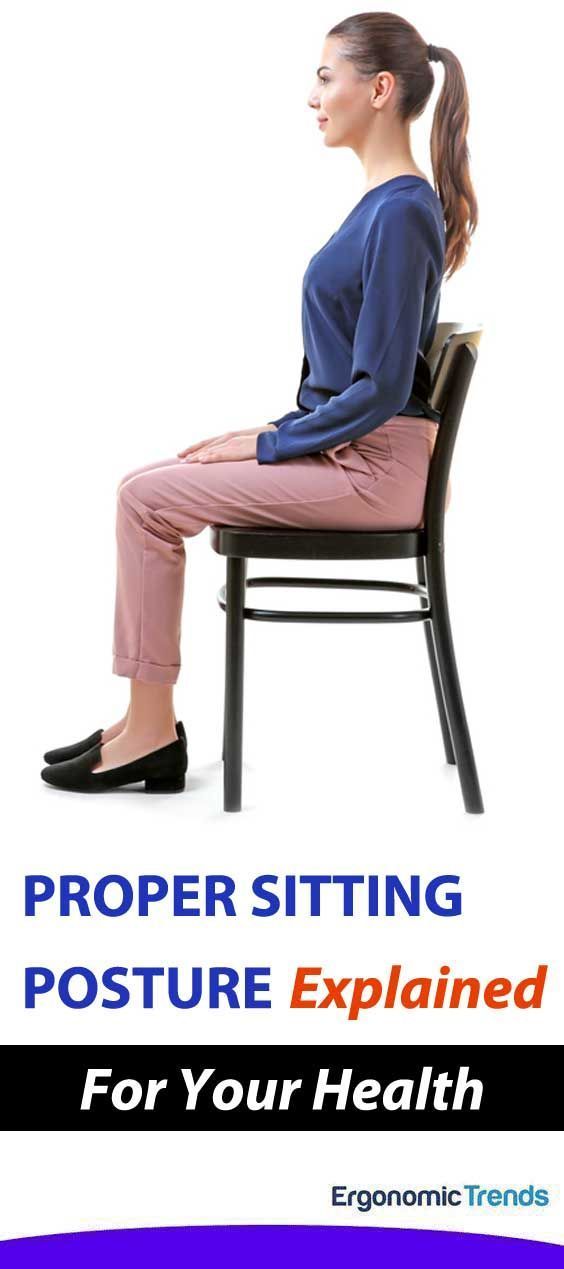 Whenever he hunches over or bows his head forward, the device will vibrate to remind him to straighten up. Before you ask – where can I buy that? I’ll say that this gadget is merely a reminder tool – you’ll still need to cultivate the muscle memory for good posturing and strength to hold that good dance frame while you are dancing. That’s why I’ve created the 5 exercises below – They are not just for posturing, but also to build good dance frame by strengthening your arms and shoulders. By doing them frequently, you will build muscle memory and strength to take good posturing not just on the dance floor, but into your everyday life. WHATT?? Yes, I know. It’s amazing. 🙂
Whenever he hunches over or bows his head forward, the device will vibrate to remind him to straighten up. Before you ask – where can I buy that? I’ll say that this gadget is merely a reminder tool – you’ll still need to cultivate the muscle memory for good posturing and strength to hold that good dance frame while you are dancing. That’s why I’ve created the 5 exercises below – They are not just for posturing, but also to build good dance frame by strengthening your arms and shoulders. By doing them frequently, you will build muscle memory and strength to take good posturing not just on the dance floor, but into your everyday life. WHATT?? Yes, I know. It’s amazing. 🙂
Exercise #1: Raise the Roof
1 set x 10 reps
Benefits: Builds shoulder strength and elongates neck.
Tips:
1. Stand tall with your eyes directly forward.
2. Keep the towel taut overhead.
3. Kiss your shoulders to your ears.
4.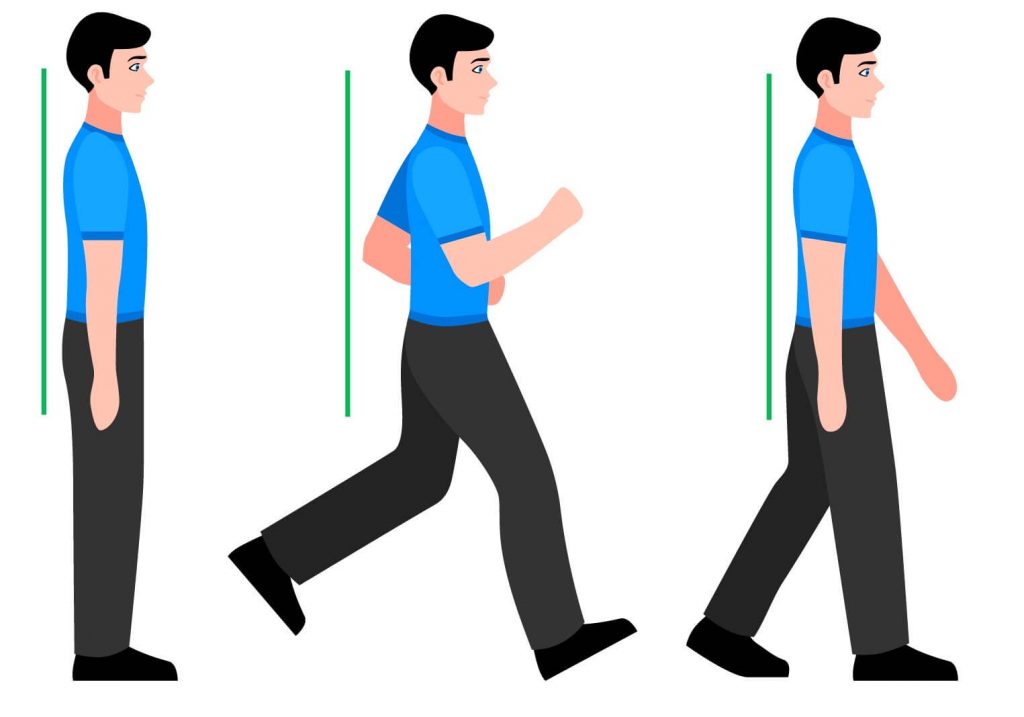 Actively pull your shoulders down using your back muscles.
Actively pull your shoulders down using your back muscles.
5. Take it slow so you can feel the stretch through your neck and back.
Exercise #2: I Dunno
1 set x 10 reps
Benefits: Builds arm & shoulder strength and stability.
Tips:
1. Plant your feet firmly into the ground and feel the crown of your head stretch into the sky. You should feel 7′ tall. That’s how I feel anyway. 🙂
2. Stretch your arms forward and keep the towel taut in front of you.
3. Raise your entire frame (arms and shoulders) to your ears, then actively pull your frame down your back.
Exercise #3: Make A Wish
1 set x 10 reps
Benefits: Keeps your shoulders anchored into your back.
Tips:
1. Start with palms together and shrug your shoulders as high up as possible.
2. Release your hands to the side, spreading your fingers and stretching your arms down towards the ground.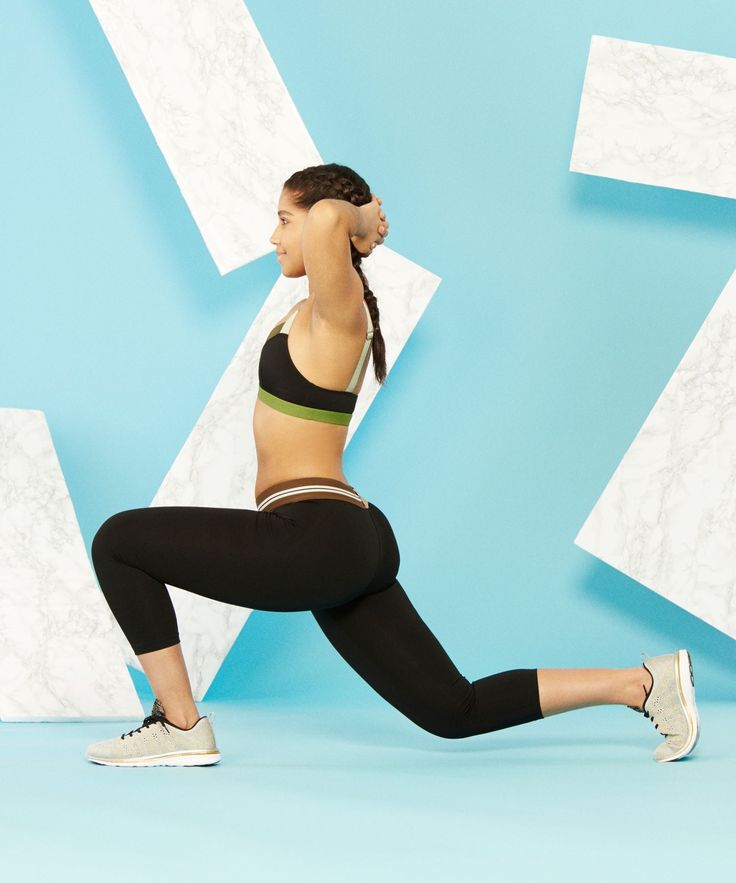
Exercise #4: Hunchback No More
1 set x 15 reps
Benefits: Aligns your spine, shoulders and hips.
Tips:
1. Curl your back forward while tucking in your tummy.
2. Pull your shoulders back over your hips, keeping a roundness in your upper back.
3. Stack your neck directly over your spine.
Exercise #5: The Pamela Anderson
1 set x 15 reps
Benefits: Eliminates the arch in the back for better alignment and strength in the body.
Tips:
1. Do an impression of Tytus doing an impression of me doing an impression of Pamela Anderson sticking her chest. 😉
2. Point your tailbone towards the ground.
3. Suck your belly in to close your ribcage.
4. Stack your head over neck, neck over spine, shoulders over hips.
A Final Word about good dance frame & posture:
Good posture has many other benefits other than looking tall, confident and feeling awesome.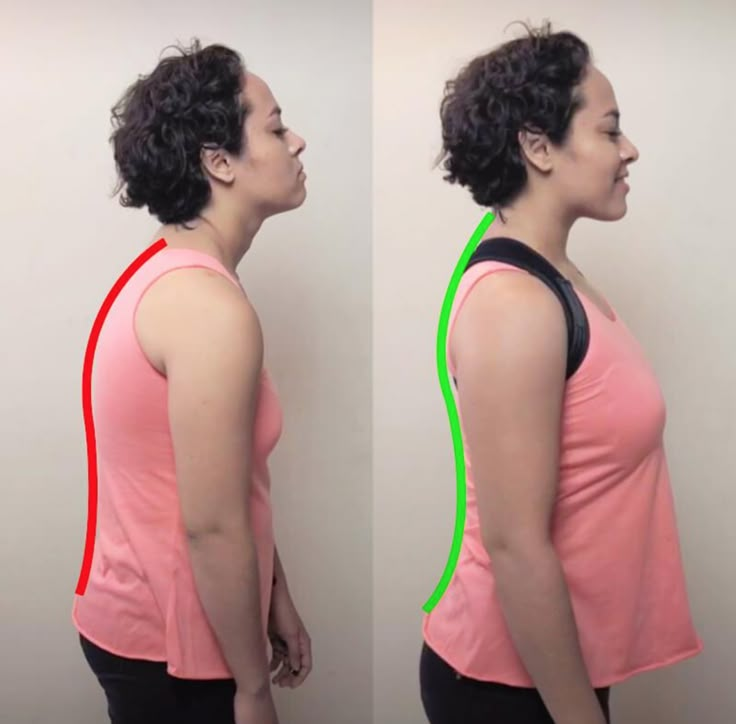 It gives you body more power as it allows you to efficiently move from foot to foot. Even if you already have great posture, these exercises are beneficial for engaging those pecs and lats for better leading and following.
It gives you body more power as it allows you to efficiently move from foot to foot. Even if you already have great posture, these exercises are beneficial for engaging those pecs and lats for better leading and following.
Strengthening your back and core are also important for the trunk of your body to support your frame. These core exercises are perfect for doing just that:
Turn on your 6 pack Abs with these 5 exercises
Search 5 Exercises 5 Minutes To Burn Up Your Legs, Butt, Core & Arms
I love hearing from you. Leave me a comment or two or three…
TAGS: Posture
Dancing and posture - dance class instead of a doctor. Transport forwarding company in Almaty
July 19, 2018
Correct posture is an essential attribute of any dance.
They start learning to keep their posture from the very first days of classes, and only after that do they move on to mastering the dance steps.
Professional dancers say that correct posture is the key to success in dance competitions.
It takes a lot of time to master the skill of keeping your back straight, both in training and in everyday life.
However, in addition to achievements in the dance field, correct posture helps to get rid of many ailments, the main of which are osteochondrosis, circulatory disorders, etc.
The ability to hold the back correctly helps the body to be healthy, and the movements to be free and elegant.
Dancing classes, in addition to correct posture, help:
- loosen up;
- improve your physical data;
- develop a sense of rhythm;
- have a beautiful walk;
- improve external data;
- improve health;
- make new acquaintances.
Posture correction: what do coaches advise?
Correct posture and dancing are closely related, so the more time you devote to dancing, the more beautifully you hold your back, and vice versa - the better your posture, the better you can move to the music.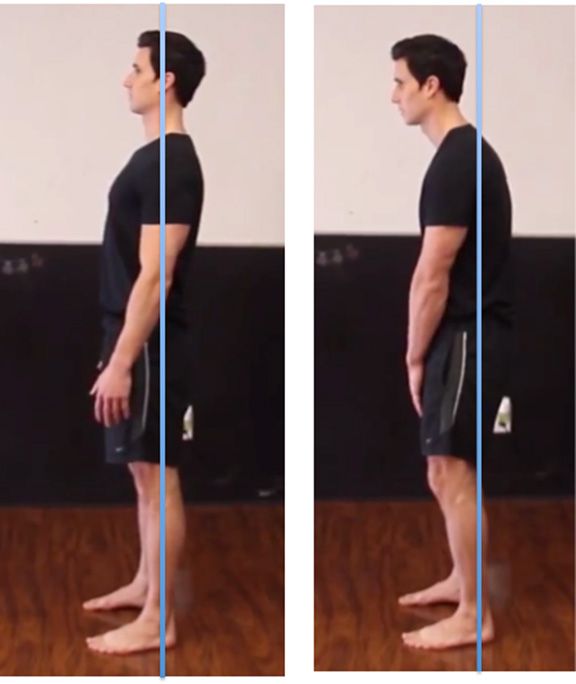 That is why, in order to correct your posture, it is not at all necessary to walk with books on top of your head or stand close to the wall for 15-20 minutes, but to move, correctly selecting dance moves. Dancing classes strengthen the muscular frame, do not allow the vertebrae to stagnate, moreover, they can be performed without risk to health. In addition to dancing, the following simple exercises help to improve the condition of the spine:
That is why, in order to correct your posture, it is not at all necessary to walk with books on top of your head or stand close to the wall for 15-20 minutes, but to move, correctly selecting dance moves. Dancing classes strengthen the muscular frame, do not allow the vertebrae to stagnate, moreover, they can be performed without risk to health. In addition to dancing, the following simple exercises help to improve the condition of the spine:
- Boat - lying on your stomach, raise your head and legs up.
- Cat-dog - standing on all fours, we bend the spine down and up.
- Swallow - lying on his stomach, arms apart, legs together. We raise the body with arms apart as high as possible, the legs remain lying on the surface.
Which dance is best for posture?
Any kind of dancing helps to straighten your posture, as rhythmic movements in one way or another involve the work of the spine. However, there are dances that improve posture more effectively, and the first in this long list is the rhythmic and passionate flamenco dance.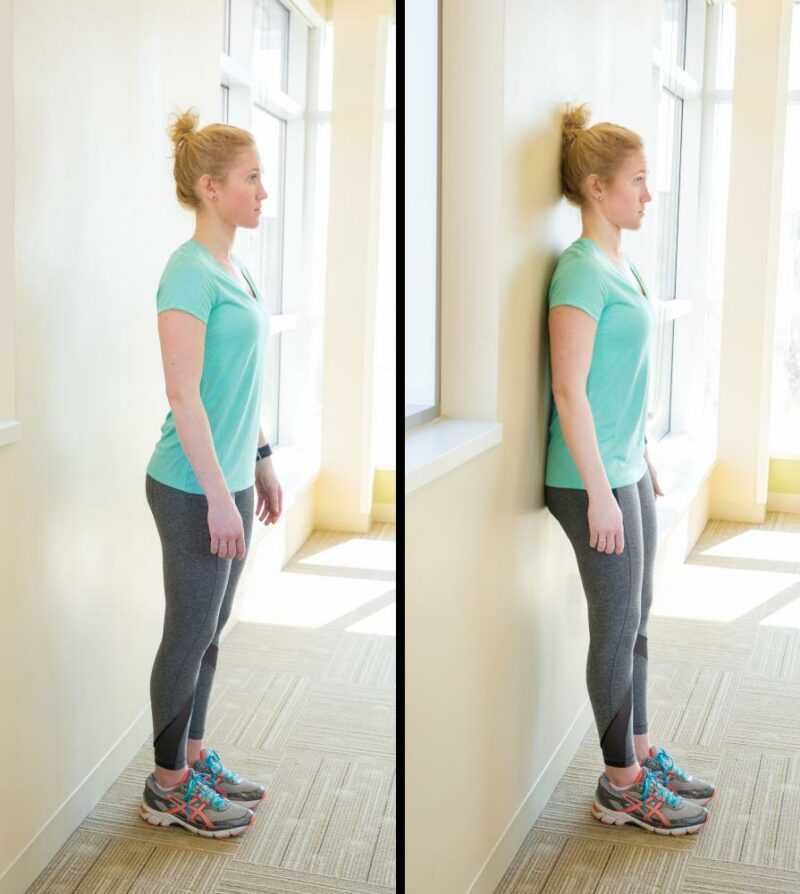 It is not for nothing that flamenco dancers have a flexible body, a beautiful line of shoulders and keep their heads proudly raised. To imagine a Spanish woman who would suffer from scoliosis is very problematic. The second dance, which helps the spine always stay healthy and the muscles strong, is the tap dance, the dance movements of which involve each section of the spine in the work.
It is not for nothing that flamenco dancers have a flexible body, a beautiful line of shoulders and keep their heads proudly raised. To imagine a Spanish woman who would suffer from scoliosis is very problematic. The second dance, which helps the spine always stay healthy and the muscles strong, is the tap dance, the dance movements of which involve each section of the spine in the work.
Ballroom dancing is another "enemy" of a stooped back, straightening your posture in just a few months of regular training. Argentine tango strengthens the muscles of the back, and its twists and turns have a healing effect on every part of the spine.
Regular classes in modern jazz and classical choreography give strength to the back muscles. Oriental dances, which are now so popular among women of all ages, also have a significant impact on the formation of posture.
In addition, each of the above directions has a healing effect on the body as a whole, helps to have a beautiful and slender figure, teaches plasticity, and simply improves mood. Do you want to have a healthy spine, beautiful posture, flawless body and good mood? Try to take up dancing, and let your own heart tell you which ones, because someone likes the incendiary Spanish flamenco, and someone likes the romantic and mysterious pas of ballroom dancing.
Do you want to have a healthy spine, beautiful posture, flawless body and good mood? Try to take up dancing, and let your own heart tell you which ones, because someone likes the incendiary Spanish flamenco, and someone likes the romantic and mysterious pas of ballroom dancing.
Source: mainwood.ru
← Return to the level above
12 effective exercises for a beautiful posture
These exercises do not require additional equipment and do not take much time. To get quick results, try to do them daily. If you have serious posture disorders, we recommend that you consult a doctor before starting classes.
Why good posture is important
Correct posture is not only beauty, but also general physical health. It reduces the load on the joints, muscles and spine and protects them from injury. In addition, according to doctors [1], even posture allows you to use your muscles more efficiently, and also improves mood and performance.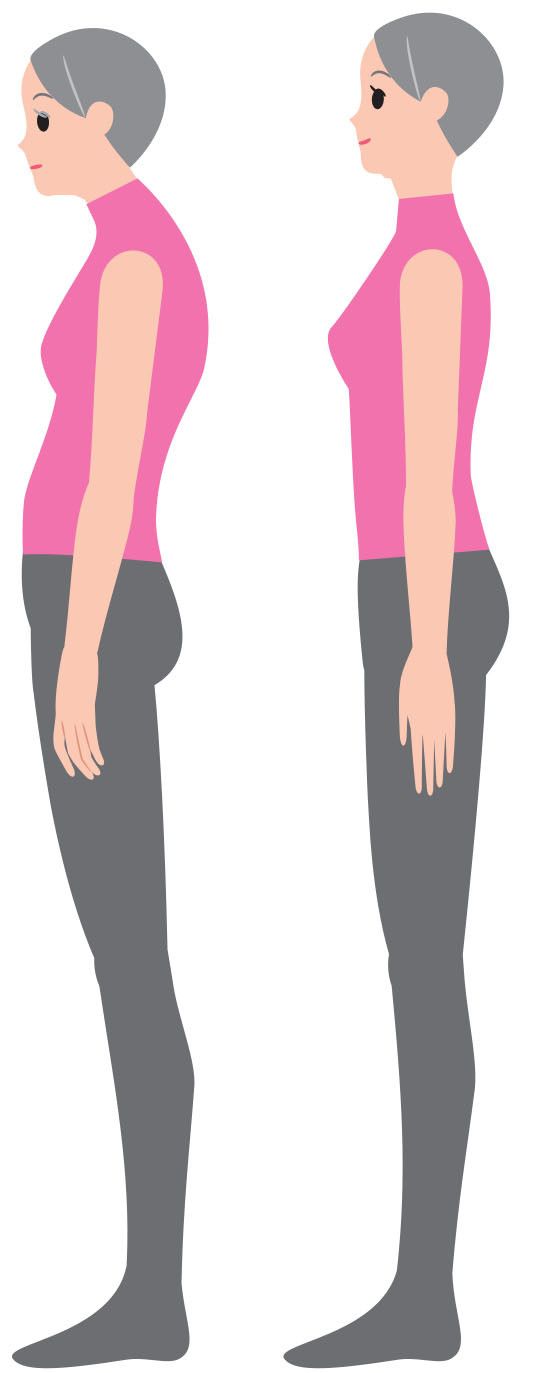
Advertising on RBC www.adv.rbc.ru
Learning how to maintain a minimal arch in the lower back will take time and focused effort: retraining the brain is not an easy task. If you have been accustomed to maintain the same position for years, the brain perceives it as natural and comfortable. In addition, the body may not be ready for the correct posture: for a beautiful posture, a developed muscular corset is needed. Start strengthening your back with these simple exercises. You will be surprised how much you can improve the quality of life just by straightening your shoulders and chest.
Exercise #1. Cat Stretches
Get on all fours. Your palms should be directly under your shoulders, and your elbows should remain straight throughout the exercise. As you inhale, relax your stomach, look up and gently arch your spine. Imagine that you are trying to reach the back of your head with your tailbone. As you exhale, tilt your chin to your chest, tighten your abs and round your back as much as possible.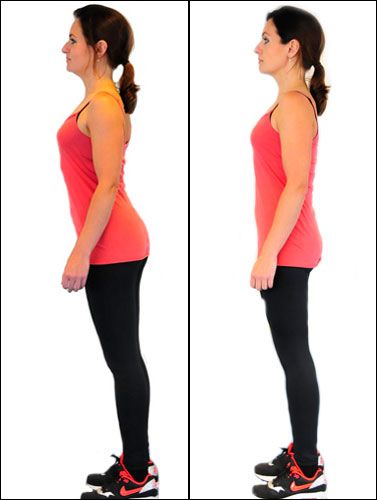 From the outside, these movements resemble cat's sipping after sleep. Do 6-10 reps. This exercise gently stretches the spine, strengthens the abdominal muscles, improves blood circulation, and also helps relieve tension in the torso, shoulders and neck.
From the outside, these movements resemble cat's sipping after sleep. Do 6-10 reps. This exercise gently stretches the spine, strengthens the abdominal muscles, improves blood circulation, and also helps relieve tension in the torso, shoulders and neck.
Exercise #2. Alternate Arm and Leg Extension
Standing in the same position, extend your right arm and left leg at the same time. Try to raise them as high as possible. Try not to lean on your right thigh to maintain balance. Instead, engage your abdominal muscles by pulling your stomach in and tensing your abs. Hold this position for 10-20 seconds, then return to the starting position. Do the same with the left arm and right leg. Repeat the exercise 10 times on each side. It well strengthens the muscles of the back, arms, legs and buttocks. In turn, developed abdominal and back muscles help stabilize the spine and maintain posture more easily.
In turn, developed abdominal and back muscles help stabilize the spine and maintain posture more easily.
Exercise #3. Deep Lunge Forward
Get on your knees and take a deep forward lunge with your right foot. The front knee should be bent at a right angle. Breathe relaxed and calm. Now raise your arms above your head and clasp them in a lock. Make sure your back is straight and your shoulders are directly above your hips. Pull your arms up until you feel tension in the shoulder muscles. Hold this position, mentally counting to ten, then return to your knees and repeat the exercise with a lunge on your right leg. Perform the exercise 5-10 times on each side.
Exercise #4. “Pencil” between the shoulder blades
This exercise relaxes the muscles of the shoulder girdle, helps to quickly relieve pain in the spine and stretches the muscles of the chest. Stand up straight, put your feet slightly wider than your shoulders and stretch your arms to the sides. Then bend your elbows at a right angle with your palms forward, pull your shoulders back as much as possible and connect your shoulder blades. Imagine that a pencil is sandwiched between them, which should not fall. Now add smooth slopes from side to side. Continue doing the exercise for 20-30 seconds. It is important to ensure that the shoulders are as low as possible.
Exercise #5. Resting on a Yoga Block
Lie on the floor with your head resting on a yoga block (brick-shaped) or a 6–9 cm stack of books.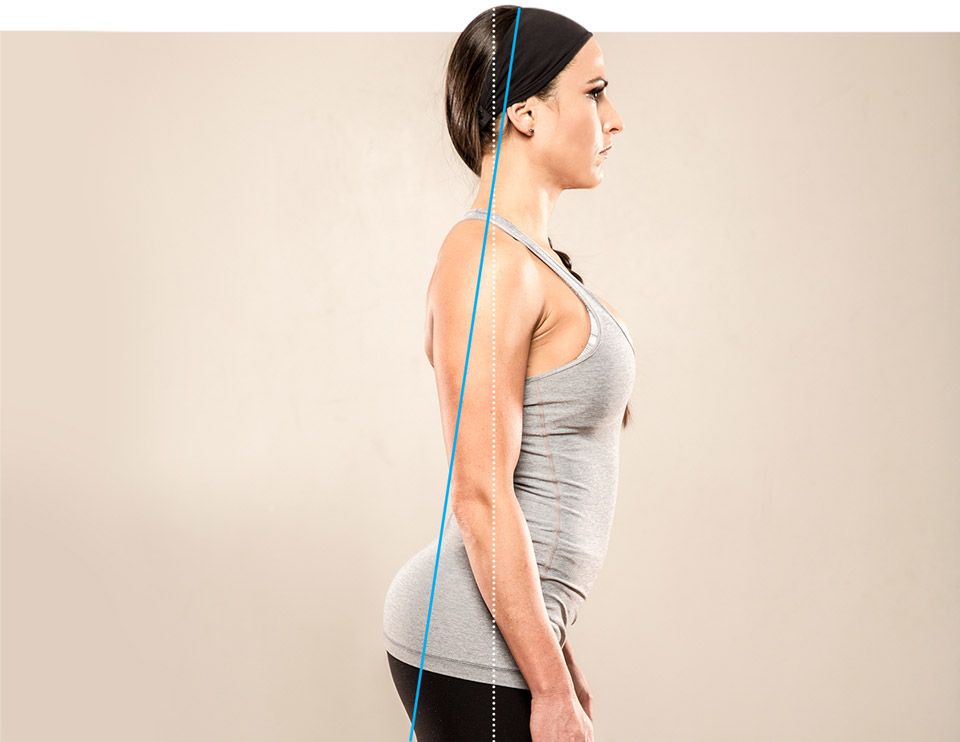 If your chin leans toward your chest, try removing one book. The head should lie flat. A roll or rolled-up blanket is also suitable. Spread your legs slightly wider than your hips and bend your knees slightly. Place your elbows on the floor, hands on your stomach. Maintain the position for 15-20 minutes. At the same time, try to relax and feel the spine, breathe evenly and deeply. When you get up again, it will be easier to maintain an even posture. This method allows you to effectively relax the back muscles and restore the natural curvature of the spine.
If your chin leans toward your chest, try removing one book. The head should lie flat. A roll or rolled-up blanket is also suitable. Spread your legs slightly wider than your hips and bend your knees slightly. Place your elbows on the floor, hands on your stomach. Maintain the position for 15-20 minutes. At the same time, try to relax and feel the spine, breathe evenly and deeply. When you get up again, it will be easier to maintain an even posture. This method allows you to effectively relax the back muscles and restore the natural curvature of the spine.
Exercise #6. Double chin effect
This exercise can be performed while standing or sitting at the workplace. It helps to restore the correct position of the head and strengthens the muscles of the neck. Drop your shoulders down and back. Looking ahead, place your middle and index fingers on your chin. Now slightly press on it and take your head back in a horizontal plane. You don't need to tilt your head up. In this case, the effect of "second chin" will be obtained. The more folds on the skin are formed, the better the result will be. Hold this position for 3-5 seconds, then return to the starting position. Repeat the exercise 10-15 times.
It helps to restore the correct position of the head and strengthens the muscles of the neck. Drop your shoulders down and back. Looking ahead, place your middle and index fingers on your chin. Now slightly press on it and take your head back in a horizontal plane. You don't need to tilt your head up. In this case, the effect of "second chin" will be obtained. The more folds on the skin are formed, the better the result will be. Hold this position for 3-5 seconds, then return to the starting position. Repeat the exercise 10-15 times.
Exercise #7. Towel chest
Place your feet shoulder-width apart or slightly wider. Bring your hands behind your back through the bottom and interlace your fingers. If you can't reach it, you can use a small towel. Grasp the loose ends and pull it tight with both hands.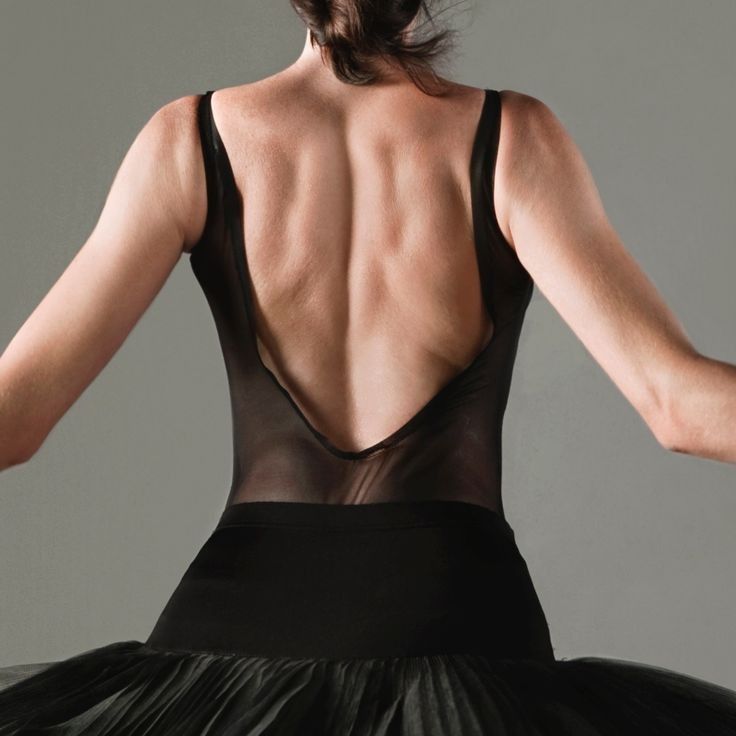 The head, neck and spine should be in the same line. As you inhale, lift your chest up to the ceiling, and begin to stretch your arms towards the floor. Take five deep breaths in and out, then lower your arms and take a short break. Repeat the exercise at least 10 times. It will help relieve enslavement in the thoracic region, which occurs due to a sedentary lifestyle.
The head, neck and spine should be in the same line. As you inhale, lift your chest up to the ceiling, and begin to stretch your arms towards the floor. Take five deep breaths in and out, then lower your arms and take a short break. Repeat the exercise at least 10 times. It will help relieve enslavement in the thoracic region, which occurs due to a sedentary lifestyle.
Exercise #8. Classic plank
Elbow plank helps to strengthen the muscular corset and correct posture. Bend your elbows at a right angle and transfer your body weight to your forearms. At the same time, the legs rest on the socks, and the body is on weight. Breathe evenly and make sure that the back remains straight, the stomach and knees are tense, and the pelvis does not "go" up or down. The whole body should form one straight line parallel to the floor.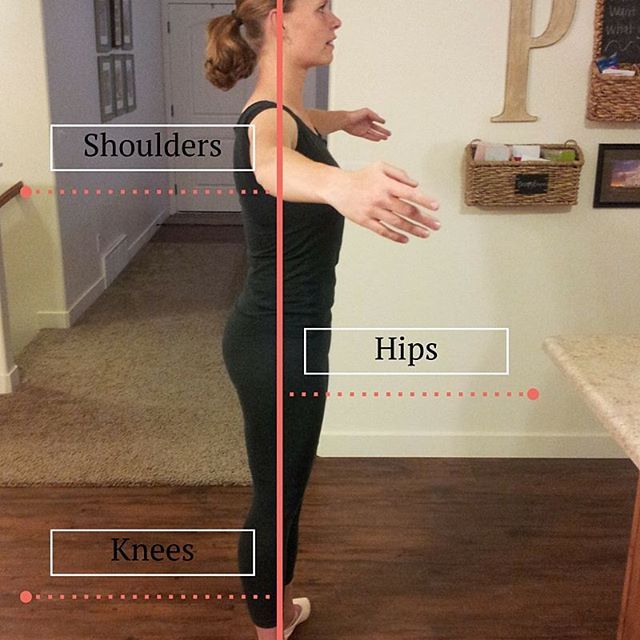 Beginners are advised to start with 20 seconds of the morning plank. In the future, the execution time can be increased up to 5 minutes. In addition to the classic, the side plank on straight arms is useful for posture.
Beginners are advised to start with 20 seconds of the morning plank. In the future, the execution time can be increased up to 5 minutes. In addition to the classic, the side plank on straight arms is useful for posture.
Exercise #9. Wall Bent Over
This exercise is useful for opening up the shoulder joints, which get tired and stiff from long hours at the computer. Stand two steps away from a wall with your feet hip-width apart. Now lean forward, rest your palms on the wall and stretch your back, feel the muscle tension. Try to lean as low as possible to better stretch your shoulders. At the same time, it is important to keep the legs and back straight - the body should form an angle of 90 degrees. Hold this position for 40-60 seconds. You can perform the exercise both in a static version, and sway slightly, deepening the stretch.
Exercise #10. Child Pose
This is one of the most popular poses in yoga. It gently and gently stretches the spine, glutes and hamstrings, and relieves tension in the lower back and shoulders. Get on your knees with your legs slightly apart. Bring your feet and knees together so that your big toes touch and your heels point to the sides. Now lower your pelvis to your hips and lean forward. If difficult, place a pillow or folded blanket under your buttocks. At the same time, hands should be extended along the body, and the head should be placed on the floor. Try to relax and start breathing deeply. Stay in this position for 3-5 minutes. Exercise is not recommended during pregnancy.
Exercise #11. Buttock Squeeze
This exercise relieves lower back pain and strengthens the gluteal muscles, the tone of which directly affects a beautiful posture. The fact is that it is the buttocks that help to keep the pelvis and torso in an upright position. If you spend most of your time sitting, these muscles become weak. To start, lie on your back with your knees bent. The feet should be about 30 cm from the hips. Stretch your arms along the body with palms down. On the exhale, try to squeeze the gluteal muscles as much as possible, on the inhale - relax. Keep doing the same for 1-2 minutes. This exercise can also be done standing or sitting.
The fact is that it is the buttocks that help to keep the pelvis and torso in an upright position. If you spend most of your time sitting, these muscles become weak. To start, lie on your back with your knees bent. The feet should be about 30 cm from the hips. Stretch your arms along the body with palms down. On the exhale, try to squeeze the gluteal muscles as much as possible, on the inhale - relax. Keep doing the same for 1-2 minutes. This exercise can also be done standing or sitting.
Exercise #12. Muscle Memory and Wall Rack
Locate an empty area of the wall, preferably without a baseboard. Lean back against it, slightly lowering your shoulders and pulling in your stomach. Make sure your heels, buttocks and shoulder blades are firmly against the wall. At the same time, a natural gap should remain in the lumbar region. Now lean the back of your head against the wall, slightly tilting your chin down. Lock in this position for 30 seconds, then move away from the wall without changing your position.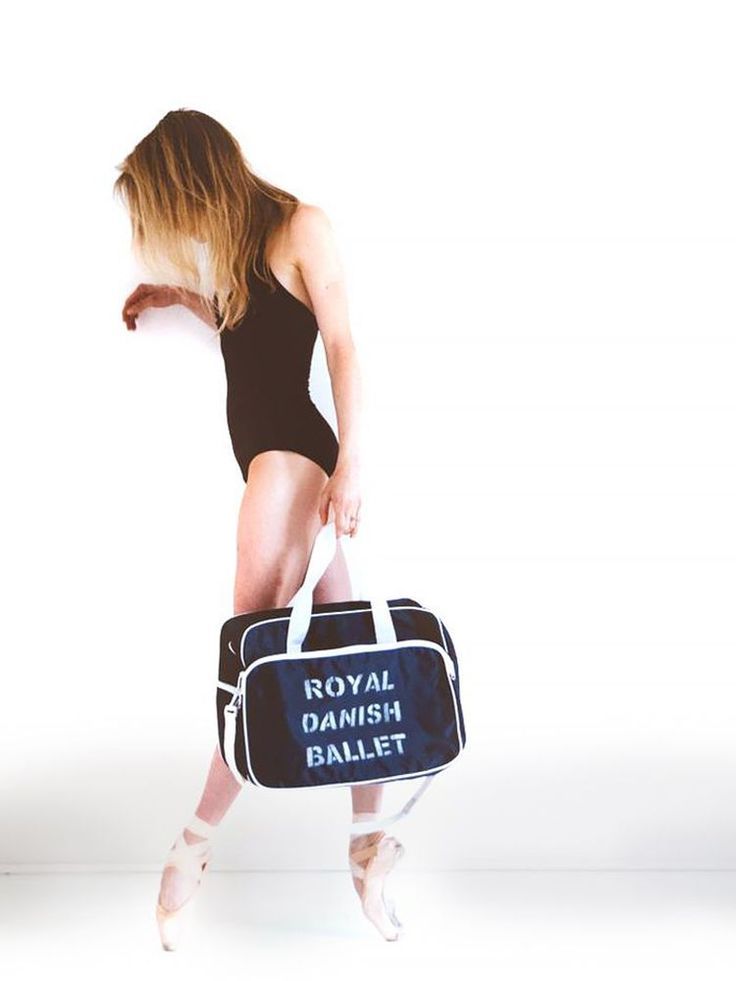 If you perform this exercise regularly, very soon the body will get used to keeping an even posture. To enhance the effect, put a small book on your head and try walking with it for 5-10 minutes.
If you perform this exercise regularly, very soon the body will get used to keeping an even posture. To enhance the effect, put a small book on your head and try walking with it for 5-10 minutes.
Tips for maintaining good posture
- Monitor your posture throughout the day: while watching TV, washing dishes, walking. Most likely, at first you will be able to maintain the correct body position for no more than 15-20 minutes. However, with regular training, the body will perceive the effort and you will no longer have to control yourself - the back will be straight easily and naturally.
- Stay Active: Use every excuse to move more. In the formation of a beautiful posture, any physical exercise can help. Especially useful are yoga, Pilates, dancing, swimming. It is also recommended [2] to do exercises aimed at strengthening the body - the muscles of the back, abdomen and pelvis.
- Monitor body weight. Being overweight can weaken your abdominal muscles, cause pelvic and spinal problems, and cause lower back pain.
 All this negatively affects posture.
All this negatively affects posture. - Wear comfortable shoes with low heels. Firstly, in lovers of high heels, the load on the muscles increases, and the legs get tired faster. Secondly, when wearing such shoes, the support function is disturbed, and most importantly, the pelvic axis deviates and the posture is deformed.
- Make sure the work surfaces are at a comfortable height for you. It doesn't matter if you are sitting at the computer, cooking dinner or eating. If you work at a computer, sit so that the top of the screen is at eye level and at arm's length. Elbows should be on the table. This will keep your neck in a neutral position and reduce fatigue.
- Don't forget to take breaks from work. This is necessary not only to reduce the static tension of the muscles of the neck-shoulder region and back, but also to increase concentration. Latvian scientists have found the ideal balance between work and rest intervals: high productivity requires 52 minutes of concentrated work and a 17-minute break.


